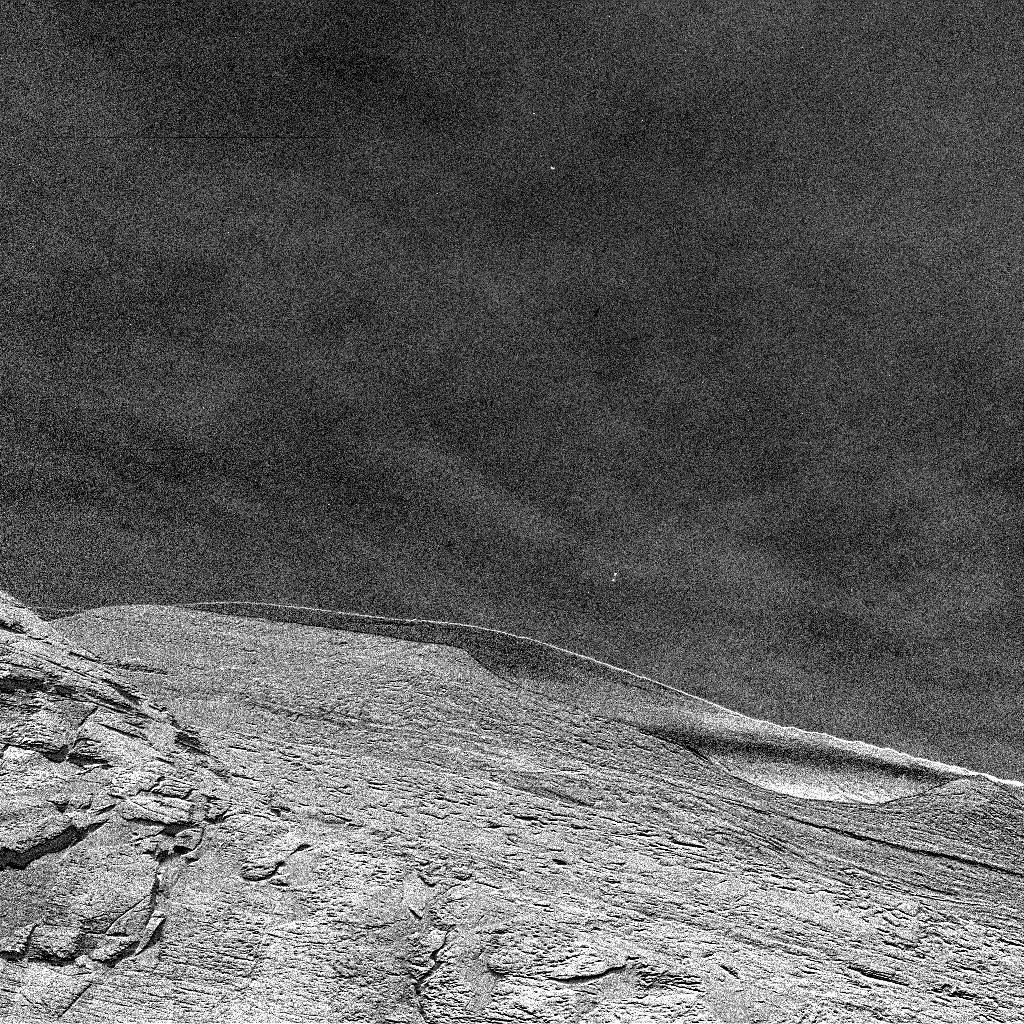Curiosity Captures Drifting Clouds on Dec. 12, 2021

February 15, 2022
Clouds can be seen drifting across the Martian sky in an 8-frame movie made using images from a navigation camera aboard NASA’s Curiosity rover. Shadows from these clouds can be seen drifting across the terrain. These images were taken on Dec. 12, 2021, the 3,325th Martian day, or sol, of the mission.
A second 8-frame movie, taken using the same navigation camera, is included here as Figure A. These images show the clouds as they were seen drifting directly above Curiosity. Scientists can calculate how fast the clouds are moving – and how high they are in the sky – by comparing the two perspectives. These clouds are very high, nearly 50 miles (80 kilometers) above the surface. It’s extremely cold at that height, which suggests these clouds are composed of carbon dioxide ice as opposed to water ice clouds, which are typically found at lower altitude.
Martian clouds are very faint in the atmosphere, so special imaging techniques are needed to see them. Multiple images are taken to be able to get a clear, static background. That allows anything else moving within the image (like clouds or shadows) to become visible after subtracting this static background from each individual image.
Curiosity’s mission is led by NASA’s Jet Propulsion Laboratory in Southern California. JPL is managed by Caltech.
Credit
NASA/JPL-Caltech/York University
View the article here: https://mars.nasa.gov/resources/26557/curiosity-captures-drifting-clouds-on-dec-12-2021/







